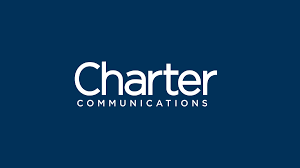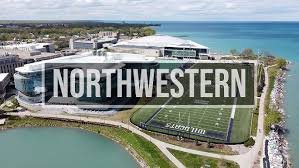When purchasing a home or refinancing an existing mortgage, one of the most crucial factors to consider is the interest rate. Even a small difference in rates can significantly impact the total cost of your loan over time. As we step into 2025, understanding how mortgage rates Mortgage Rates Comparison Guide work and how to compare them effectively can save you thousands of dollars. This guide aims to walk you through the essential steps for finding the best mortgage rates in 2025.
Understanding Mortgage Rates
Mortgage rates refer to the interest charged on a home loan. These rates fluctuate daily and are influenced by several factors, including economic conditions, inflation, Federal Reserve policies, and lender competition. In 2025, rates are expected to be shaped by ongoing economic recovery, inflation adjustments, and central bank policies aimed at balancing growth and affordability.
Fixed vs. Adjustable Mortgage Rates
Before diving into comparisons, it’s vital to understand the two main types of mortgage rates:
- Fixed-Rate Mortgages: The interest rate remains the same throughout the life of the loan. This offers stability and predictability in monthly payments.
- Adjustable-Rate Mortgages (ARMs): These loans start with a lower rate for a fixed period, after which the rate adjusts periodically based on market conditions. ARMs can be beneficial if you plan to move or refinance before the rate adjusts.
Factors That Affect Mortgage Rates
When comparing mortgage rates in 2025, keep in mind the variables that influence the rate you’ll be offered:
- Credit Score: Lenders use your credit score to assess risk. A higher score generally qualifies you for lower rates.
- Loan Amount: Larger loans may carry higher rates unless classified as a jumbo loan with favorable terms.
- Loan Type: Conventional, FHA, VA, and USDA loans all have different rate ranges.
- Loan Term: Shorter terms (like 15 years) usually have lower rates but higher monthly payments.
- Down Payment: The more you put down upfront, the lower your rate might be.
- Debt-to-Income Ratio: A lower ratio makes you a less risky borrower, potentially leading to better rates.
Tools and Resources for Rate Comparison
To find the best mortgage rates in 2025, take advantage of online tools that offer real-time rate comparisons. Here are a few trusted resources:
- Bankrate: Provides a daily updated list of rates from various lenders.
- LendingTree: Offers personalized quotes based on your financial profile.
- Zillow Mortgage Marketplace: Helps compare lender offers and user reviews.
- Your Local Banks & Credit Unions: These may offer competitive rates not listed on national websites.
Step-by-Step Guide to Comparing Mortgage Rates in 2025
Step 1: Check Your Credit Report
Start by reviewing your credit report and correcting any errors. A strong credit score (typically 740 or above) gives you access to the lowest rates. Consider using free credit monitoring tools to stay informed.
Step 2: Determine Your Budget
Before comparing rates, know how much home you can afford. Use mortgage calculators to estimate your monthly payment based on various rates and terms.
Step 3: Choose a Loan Type and Term
Decide whether a fixed-rate or adjustable-rate loan suits your situation. Also, choose a loan term (e.g., 15, 20, or 30 years). This will help narrow your rate search and make comparisons more consistent.
Step 4: Get Multiple Loan Estimates
Request quotes from at least 3 to 5 lenders. Ask for Loan Estimates, a standardized form that shows the interest rate, monthly payment, fees, and closing costs. This makes it easier to compare offers side-by-side.
Step 5: Consider APR, Not Just the Rate
The Annual Percentage Rate (APR) includes the interest rate plus lender fees and closing costs, giving a more accurate picture of what you’ll actually pay. A lower APR is typically a better deal than just a lower base rate.
Step 6: Review Fees and Terms
Don’t get tricked by low teaser rates that come with high fees. Examine all costs associated with the loan: application fees, origination fees, discount points, and prepayment penalties.
Step 7: Lock Your Rate
Once you find a favorable rate, consider locking it in. Rate locks usually last 30 to 60 days and protect you from market fluctuations during the home buying process.
Tips to Get the Best Mortgage Rates in 2025
- Improve Your Credit: Pay down debts, make timely payments, and reduce your credit utilization.
- Shop Around: Don’t settle for the first offer. Comparison shopping can save you significant money over time.
- Negotiate: Some lenders may match or beat competitors’ offers if you show them written quotes.
- Consider Buying Points: You can pay upfront fees to reduce your interest rate. This may be beneficial if you plan to stay in the home long-term.
- Work with a Mortgage Broker: A broker can access multiple lenders and may help you find better rates than going directly to a bank.
Trends to Watch in 2025
1. Digital Mortgage Services
More lenders are offering fully digital application processes, which can speed up approval and offer better deals due to reduced overhead costs.
2. Green Mortgages
If you’re buying an energy-efficient home or making eco-friendly upgrades, some lenders may offer lower rates through green loan programs.
3. AI-Driven Rate Optimization
Some platforms now use artificial intelligence to tailor mortgage rate offers based on real-time financial data and behavior patterns.
4. Hybrid ARMs
In 2025, more borrowers are opting for hybrid ARMs (e.g., 5/6 ARM), which combine the initial benefits of a fixed rate with adjustable features later.
Final Thoughts
Finding the best mortgage rate in 2025 is about more than just hunting for the lowest percentage. It requires a full-picture analysis of your financial situation, the loan terms, lender reputation, and total costs. Take the time to compare thoroughly, use reliable tools, and don’t be afraid to ask questions or negotiate. With the right strategy, you’ll not only secure the best mortgage rate but also position yourself for long-term financial stability.




